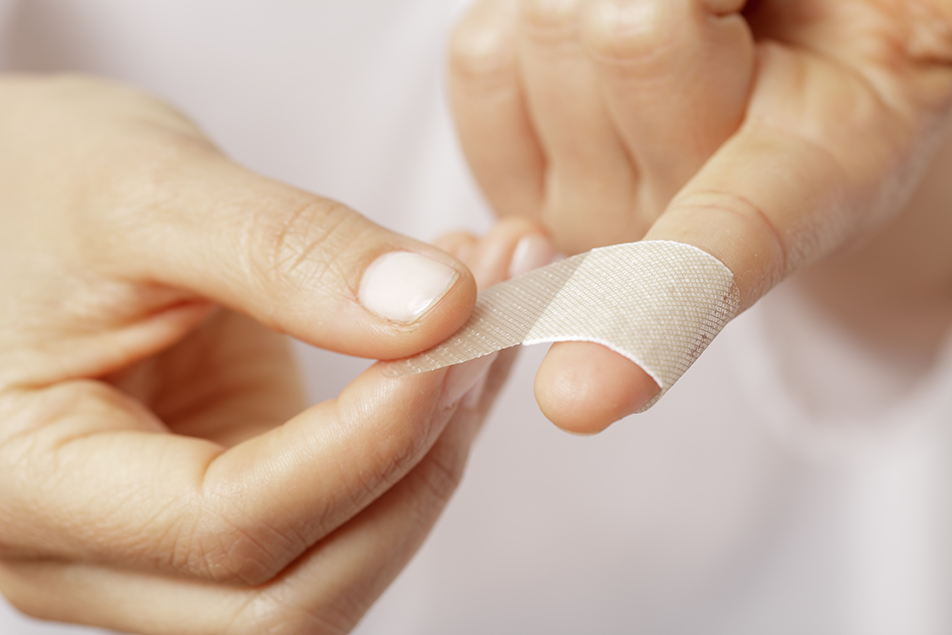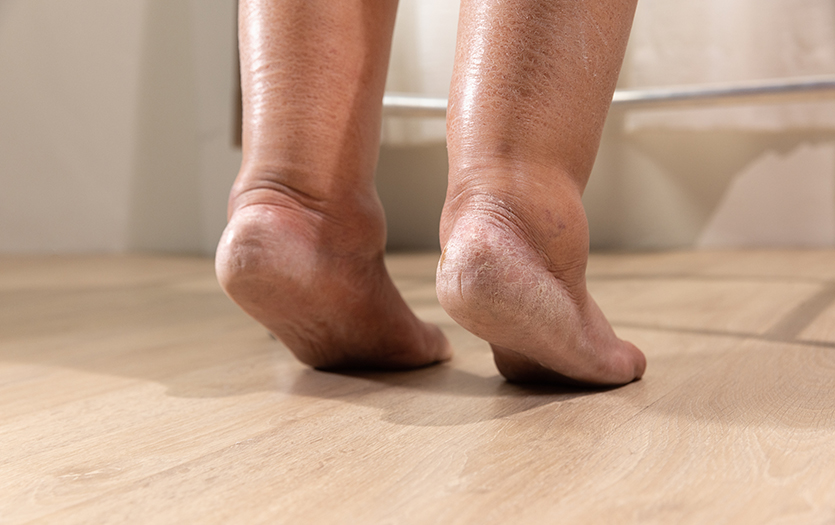
Cuts and scrapes happen all the time, and in many cases, a minor wound can easily heal on its own. However, there are instances when a more severe injury may require stitches to heal properly. Joseph Putman, MD, PPG – Family Medicine, helps answer our questions regarding stitches and how to know when you should seek medical care.
What are stitches?
Stitches are a material, usually silk or nylon, that hold tissues together after an injury. They are very similar to thread holding pieces of clothing together. Some stitches will dissolve, so they don’t require removal. The primary purpose of using stitches is to align tissue edges so they can fuse back together. Your doctor will remove the stitches once the tissue has healed.
What can someone expect when getting stitches?
Getting stitches for the first time can be scary, but it’s more likely that whatever caused the wound would have hurt much more than getting the stitches. So, how does it work? Typically, wounds get numbed using a medication called lidocaine. You can expect some slight burning or stinging during the numbing process. It doesn’t last long, and thankfully the suturing process is painless once it takes effect. After the wound is numb, it can be thoroughly inspected and cleaned out. Then, depending on the injury, you may need x-rays to ensure there isn’t any remaining debris in the wound. If caused by glass or sharp metal, it’s crucial to confirm the cut is clear before suturing. Once clean and ready to be stitched up, a sterile drape will be placed around the wound so contaminants can’t get in and the suture material stays sterile. If a wound is deep and/or large, it may be necessary to use different kinds of sutures. Deep layers of tissue, for example, would require stitches that dissolve on their own, then the skin can be closed with a silk or nylon stitch.
What kind of cuts and wounds warrant stitches?
The signs an injury may need stitches is if it is deep, jagged or gaping. Large wounds like this are unlikely to heal well on their own and susceptible to complications, including persistent bleeding, infections and worse scarring. If a wound is bleeding profusely and doesn’t stop after 15-20 minutes of direct pressure, it most likely needs stitches. When there is numbness or loss of function in the wound area, it could indicate nerve or tendon injuries that would require stitches. Some body parts are more likely to need stitches, including joints and places with a lot of movement. Stitches will reinforce the wound, helping keep the edges together to heal quicker and with less scarring. Injuries around the mouth, eyes and genitals are also more likely to need stitches. These are areas that scars would be less desirable, but stitches would help prevent scarring.
What steps should someone take before heading to the doctor?
If you have a wound caused by an object and it’s still stuck in the wound, leave it in. Bleeding can become much worse by removing the object. Also, make sure you wash your hands with soap and water. It’s best to rinse the wound with clean water and use a clean cloth or bandage to apply direct pressure, if possible. Avoid scrubbing the wound and using hydrogen peroxide or iodine, which could irritate the wound. If the bleeding soaks through the bandage, don’t take it off. Instead, put a new one on over the old one. Raising the wound above heart level may help to slow or stop the bleeding. If a child has an injury that may need stitches, it’s best to keep them from eating or drinking anything. This is important because they may require medication to calm them, and if they’ve eaten, they may have to wait longer for treatment.
How can someone take care of their stitches at home?
Taking care of stitches at home depends on the severity and location of the wound. In all cases, it’s best to keep the wound clean and dry. Sometimes your doctor may advise using an antibiotic ointment to help prevent infection. You will want to keep the wound dry for the first 24 hours. After the first day, you can shower or bathe as long as there isn’t water pressure directly on the wound. You also don’t want to soak the wound. It’s best to keep it covered while showering or bathing, then change the bandage afterward. You’ll want to steer clear of swimming and activities that could cause further injury. Try to avoid excess dirt and debris, which could increase the likelihood of an infection. It’s important to change bandages daily and keep an eye out for any red streaks coming from the wound. If any of the stitches come loose or break, please let your doctor know as soon as possible. You will also want to call your doctor immediately if you have any signs of infection, including increased pain, swelling, drainage or foul odor coming from the wound.
Will the stitches come out on their own or need to be removed?
Some stitches, including those in the mouth or other mucous membranes, are likely to dissolve independently. However, most stitches will require removal. The time frame depends on the location and size of the wound. Generally, stitches on the head and face don’t stay in as long to reduce the risk of scarring. They typically need to stay in for 3-5 days. Wounds on knees, elbows and other joints stay in for 10-14 days. Other areas get removed after 7-10 days. Removing stitches is much less complex than putting them in, and in most cases, it is relatively painless. There may be some tugging, but it shouldn’t be painful. Delaying the removal of stitches for longer than recommended can make extraction more difficult and likely cause worse scarring.
Final thoughts
The thought of getting stitches can be frightening for many people, especially children. It doesn’t have to be an unpleasant experience, and understanding which wounds need stitches is a critical assessment. It is best to seek care and get the wound closed within 6-8 hours and before 24 hours. Delaying closure of the injury can cause more bleeding, risk of infection and worse scarring. Some puncture wounds, including those caused by dirty or rusty materials, will require a Tetanus vaccination or update if it has been more than 10 years.
Moreover, many people often worry about scarring after stitches, but they can take steps to make them less visible. First, make sure the stitches get removed in the time frame advised by your doctor. It’s also important to protect the wound from the sun. Once the stitches are removed and the wound has healed, keep the area covered or apply sunscreen since this new skin is more likely to become discolored and will make the scare more visible. Utilizing sheets or gels containing silicone can help reduce visibility and improve color. Some medications also contain onion extract, which can also help improve the appearance. Lastly, using your fingertip to gently massage and rub the scar can help flatten and soften it.



